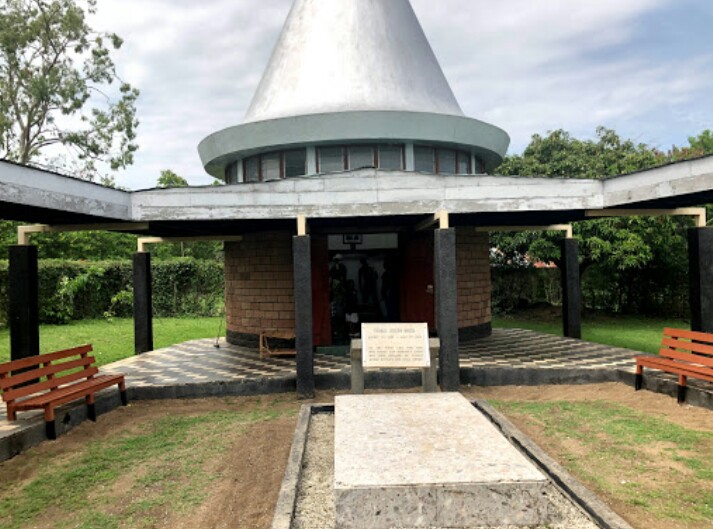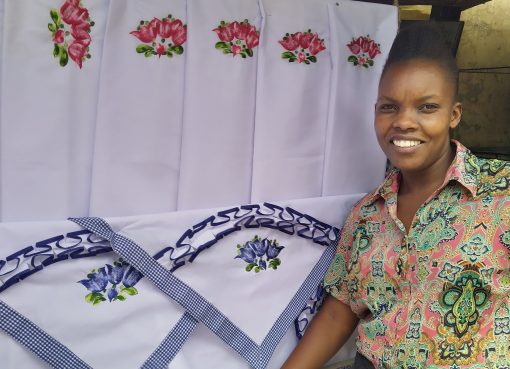For any tourist visiting Homa Bay County, the late Tom Mboya mausoleum in Rusinga Island is a favourite destination. It was built in honour of Thomas Joseph Mboya for his outstanding contribution to the development of Kenya and post-colonial Africa. It was gazzetted as a national monument in 2001.
It is located approximately 10 kilometers from Mbita Town at his grave site in his rural home. Tom Mboya was a pioneer trade unionist, a brilliant, charismatic and an eloquent politician and statesman.

A number of Tom’s personal items and collections are on display at the mausoleum. They include his beloved black and white fly-whisks and a briefcase which he carried when he was assassinated on July 5,1969.
The mausoleum also contains awards given to him by leaders from various nations, motivation books, speeches he gave out at various forums and a collection of newspaper cuttings featuring him.
Paul Ndiege, a brother to the late Mboya and a curator at the mausoleum says the iconic site receives numerous local and international visitors every year. He says their father, Leonard Ndiege worked as casual labourer in a sisal farm owned by colonial settlers.
Ndiege however decries the poor state of the road leading to the mausoleum. “The dilapidated road from Mbita Point, which is also one of the biggest trading centres in this area, has greatly contributed to the low number of investors and low trade volumes,” he said.
Some of the investments in the area include the Rusinga Lodge, an airstrip, an archeological site and fish landing centres.
Tom Mboya was famous for his involvement in the trade union movement in the 1950s. He also served as the Member of Parliament for Makadara constituency. He was appointed minister for Constitutional Affairs in independent Kenya’s first Cabinet, and then moved to the Ministry of Planning at the age of 30.
His life was cut short by a bullet at the age of 39 along Nairobi’s Moi Avenue, then known as Government Road.
Ndiege says Tom attended Rabai Mission School then went to St Mary’s Yala, later enrolled to Holy Ghost, the current Mang’u High School in form one. He dropped out of school in form two due to lack of school fees following his dad’s retirement.

He says a Catholic priest helped his brother enroll to Holy Sanitary Institute in Lower Kabete where he trained as a Public Health Officer and was employed at Nairobi city council as a Health Inspector.
Ndiege says his deceased brother’s passion to defend humans’ and workers’ rights was inspired by the struggle he saw his father undergo at the sisal farm owned by a white settler. “Mboya faced a lot of challenges at his place of work because he was African. They wore uniforms and were not allowed to inspect a white man’s premises. They were paid a fifth of what the white men were paid for the same job position,” Mboya’s brother narrates.
According to Ndiege, the late Mboya was a humble servant of the people who never allowed power to get into his head. “Tom would listen attentively to all those who sought his advice and assistance, he would then put in efforts to provide solutions,” he added.
He says in1955, Mboya earned a scholarship to Oxford University where he studied Political Science and Economic Industrial Relations.
Pundits and historians credit Tom Mboya for initiating projects and programmes like African-American Students’ Foundation that enabled brilliant students from less fortunate backgrounds to get scholarships to study in the US.
The programme’s beneficiaries included Wangari Maathai, the first African woman to receive the Nobel Peace Prize, and Barrack Obama Senior, the father to the first black American President Barrack Obama.
After Kenya got independence in 1963 under Mzee Jomo Kenyatta’s leadership, Mboya was appointed Minister for Justice and Constitutional Affairs and he actively participated in drafting the Constitution.
Tom Owuor, an historian, says Mboya wrote numerous academic papers and blueprints some of which were adopted by other countries to develop their economies.
Ndiege attributes succession and tribal politics in the post-colonial government to assassination of his brother.
“Tom’s achievements had propelled him to high stakes succession politics in Jomo Kenyatta’s government and when his opponents failed to outwit him politically, they chose to eliminate him,” Ndiege says.
“They tried constitutional amendment to bar him because of his young age but it failed. They weakened his trade unions in a bid to destabilise him politically but they also failed,” the brother said. On Saturday, July 5, 1969, Mboya was shot and killed along Moi Avenue.
“He parked his car and walked to Channi’s Pharmacy to buy medicine. He later chatted with the pharmacy owner who was a relative and on leaving, an assassin named Nahashon Isaac Njenga shot him thrice and killed him,” Owuor narrated.

Paul lamented that the family has never received justice for the ruthless murder of their kin.
He says in 1971, two years after his death, Mboya’s friends from across the world came together to build the mausoleum in his honour.
The iconic mausoleum is designed in the shape of a bullet, which was what killed Mboya.
According to the curators the door is designed as a coffin with a cross symbolising that he was a devoted Catholic.
“For a long time, the mausoleum was managed by the family but in 2001 it was gazette as a national museum. Scholars who want to write more about Tom Mboya are among regular visitors here,” Ndiege says.
He urged the government to upgrade the road to the mausoleum to bitumen standard saying the road was in a bad condition to an extent of making the place inaccessible during the rainy season.
“We have had visitors who have come up to Mbita town and were forced to go back because of the poor state of the road during rainy seasons,” Ndiege added.
By Davis Langat




